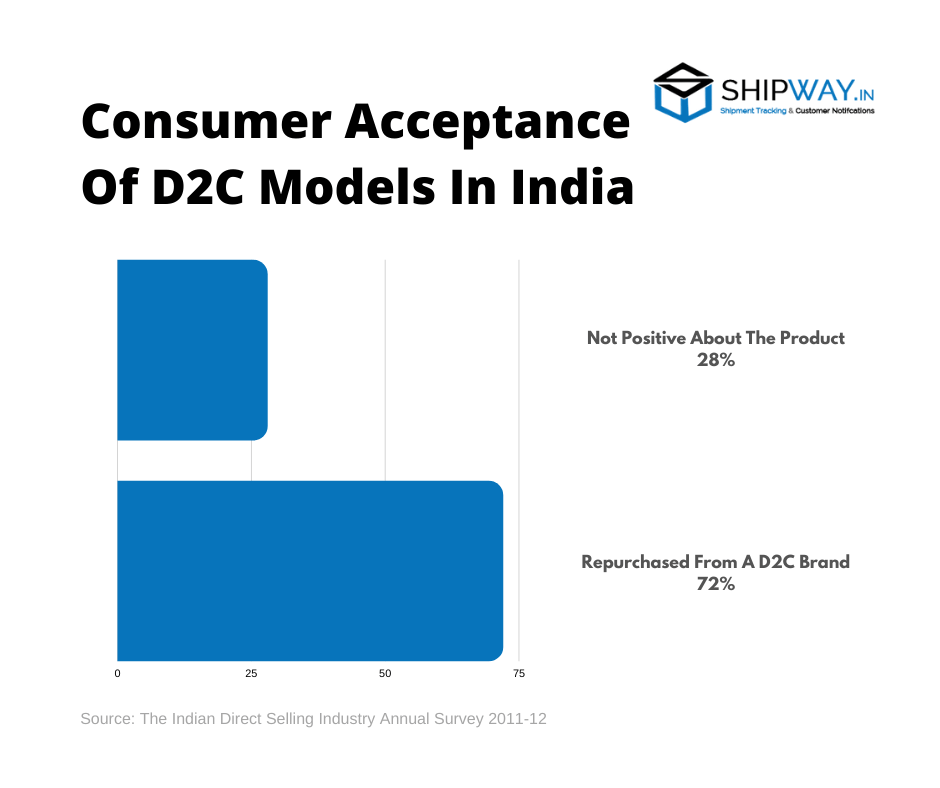
Navigation menu
Picture the business environment a decade ago.
Vast capital investments in real estate to set-up a brick-mortar store, share margins with wholesalers, retailers, and distributors to reach the customer, a non-existent understanding of the customer response due to the long trail and presence on the internet being a distant and not-so-urgent dream.
While people in tier II and tier III cities were still accepting the growing trend of shopping malls, boom— entered e-commerce players and changed the game. Every market player wanted to be visible to the online customer and expand their market potential.
Almost a decade later, the internet is now synonymous as the fourth element to the bare necessities of roti-kapda-makaan. Once the subconscious behaviour of a consumer shifted from finding the right store to get his product to typing the product name on his phone browser and buying his needs at competitive prices, there was no turning back. Aided by the powerful social media platforms, businesses were now exposed to opportunities galore, enabling them to not just interact but transact with customers directly.
Dawn Of The D2C Era
While social media helped gain high footfalls and conversions on brand websites, the real challenge stood in delivering a high-quality post-purchase experience on the likes of an e-commerce giant. The expectations of a customer who was now used to concepts such as same-day-delivery have been set high. The biggest challenge for direct to consumer (D2C) brands is to cater to this psyche while competing with e-commerce majors and their intense logistic and supply chain network web.
Transparency has a crucial role to play in the D2C business model. Competing with e-commerce giants in the entire post-purchase journey is a comparatively long and challenging task than making the process transparent for the consumer and enabling them to view the product journey from the warehouse to their hands. One can argue that shipping products via a world-class courier service might solve the problem that we talk about here.
However, in doing so the brand can miss out on an easy opportunity to generate a holistic experience and customer loyalty. It also adds to the hazard of owning the responsibility of poor service or traceability provided by the courier company.
Having a customized delivery tracking system helps D2C brands with automatic shipment status updates, enhanced customer experience, and analytics for your orders flow.
It helps the D2C business model in brand building by allowing its customers to follow orders and delivery updates in branded customizable tracking URLs. Further, it helps generate a Net Promoter Score (NPS) which tells a brand how satisfied their customer was throughout his buying journey. This key metric helps gauge customer feedback, find loopholes, and improve overall performance.
The Indian Direct Selling Industry Annual Survey 2011-12 by Ph.D. Research Bureau reveals that wellness and cosmetics lead the direct selling markets of most economies like Japan, Korea, Taiwan, India, Singapore, while household goods and others also had reasonable large market sizes in economies like Japan, Korea, and Malaysia. Likewise, products related to foodstuffs, clothing, home improvement have small markets among the Asian economies.
.png)
Another interesting finding is the gender divide amongst sellers in the direct selling business. The research noticed across nations that in the direct selling business, women have been playing an active role. The share of women has always been more than 50% in direct selling business. However, with the rising cost of living especially in metro cities, Indian men are looking up to this sector as a supplementary earning opportunity, as the consumption basket of the family has swelled up over the years.
Research also revealed that 72% of the respondents in a survey had purchased/re-purchased direct selling products. Several reasons like personalized attention, the chance to ask questions, chance to try products, or have them personally demonstrated, and finally the trust and confidence in word-of-mouth usage by relatives, friends, or neighbors have been attributed to this. However, the remaining 28% did not purchase/re-purchase any products as they were not very positive about these products.

A deep understanding of technology platforms and the fact that retailers are limited in what they can sell by the amount of shelf space they have, and so can only stock fat-tail products popular enough to justify keeping the inventory. Former Wired magazine editor Chris Anderson coined the phrase ‘long tail’ for all the products that don’t get placed in retail locations but which someone, somewhere, will buy. But the fastest-growing D2C brands are going after niches within the ‘fat tail’ and executing their positioning by relentlessly focusing on only a handful of products.
Building And Keeping The Focus:
Customer centricity is the core of building a successful D2C business model. And so is accounting. As the business moves from a retail or e-commerce approach to a D2C model, the most effective source of marketing is how you make your customers feel through their entire buying journey and the brand they help you build by word-of-mouth. Keeping the customer informed goes a long way in building that trust. Ecommerce platforms offer end-to-end solutions to build and maintain this relationship. However, offering the same post-purchase experience with limited resources and bandwidth becomes a big challenge.
White-collar e-commerce back-office automation process solutions such as Shipway, help in deliveries that are traceable, faster, and less prone to manual error.
Due to the huge competition in the e-commerce industry, it is important to deliver nothing less than an excellent buying experience. This not only includes the quality of the product but it must also have the right workflow in aspects such as faster delivery management, timely tracking notification, post-purchase communication, hassle-free return policy, etc.
Shipway provides all these features in one place. For a merchant, managing multiple carriers and multi sales channels is a difficult task. Under Shipway, they can get seamless integrations to most of the sales channels and carrier partners.
Key Takeaways
- The brick-mortar model did not allow the manufacturer to have an understanding of the customer response due to a long tail.
- The internet is now an existential need and has shifted the consumer psyche from finding the right store on the internet to get his product to typing the product and buying his needs online at competitive prices.
- Social media helped gain high footfalls and conversions on brand websites, the real challenge stood in delivering a high-quality post-purchase experience on the likes of an e-commerce giant.
- The biggest challenge for direct to consumer (D2C) brands is to compete with e-commerce majors and their intense logistic and supply chain network web.
- Competing with e-commerce giants in the entire post-purchase journey is a comparatively long and challenging task than making the process transparent for the consumer and enabling them to view the product journey from the warehouse to their hands.
- A customized delivery tracking system helps D2C companies in brand building by allowing its customers to follow orders and delivery updates in branded customizable tracking URLs.
- It also helps generate a Net Promoter Score (NPS) which helps gauge customer feedback, find loopholes, and improve overall performance.
- The share of women has always been more than 50% in a direct selling business.
- About 72% of the respondents in a survey had purchased/re-purchased direct selling products.
- A D2C model, the most effective source of marketing is how you make your customers feel through their entire buying journey and the brand they help you build by word-of-mouth.
- White-collar e-commerce back-office automation process solutions such as Shipway, help in deliveries that are traceable, faster, and less prone to manual error.











